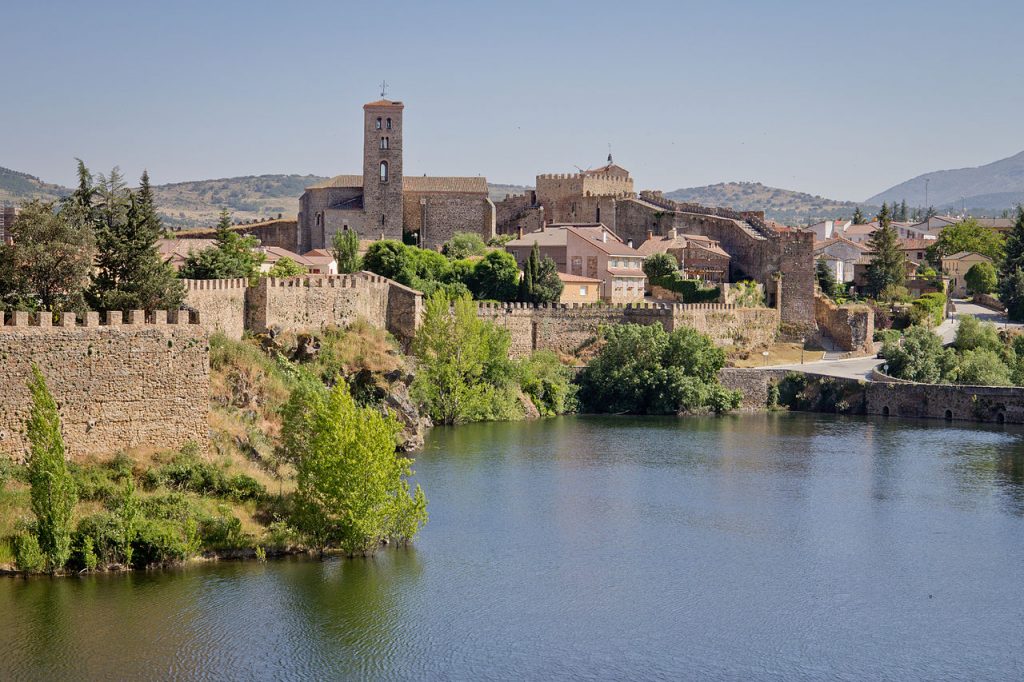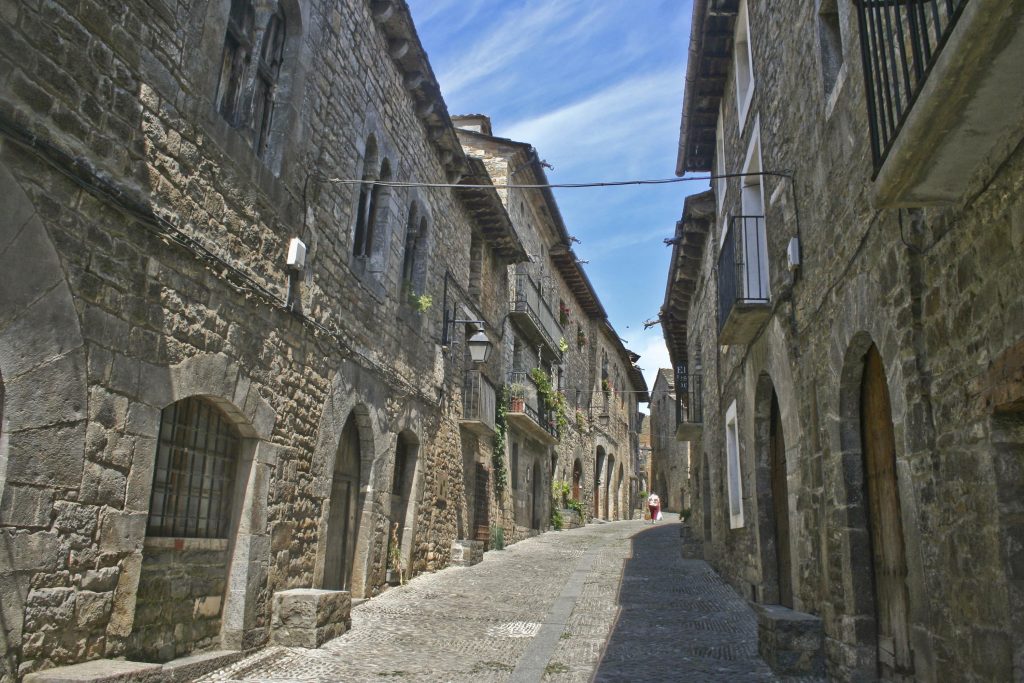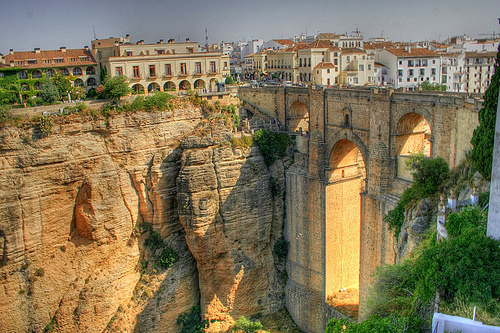Spain is a country of castles and walls and a good number of these have survived to this day in very good condition. Much of what is preserved from the medieval era, remains in towns, whose streets have maintained their personality, without succumbing to the temptation to expand with modern buildings and complexes.
Walking through these villages is like immersing yourself in a fairy tale. Its narrow streets, walls and castles transport us to a time of legend. If you want to make a trip to the Spanish Middle Ages, why not start with these....according to the Repsol Guide, they are the 10 best-preserved medieval villages in Spain:
Besalú, Girona

The name Besalú is derived from the Latin Bisuldunum, meaning a fort on a mountain between two rivers. It is also the historical capital of the county of “La Garrotxa”. Besalú was designated as a historical national property ("conjunt històric-artístic") in 1966. The town's most significant feature is its 12th-century Romanesque bridge over the Fluvià river, which features a gateway at its midpoint. The church of Sant Pere was consecrated in 1003. The town features arcaded streets and squares and also a restored mikveh, a ritual Jewish bath dating from the eleventh or twelfth century, as well as the remains of a medieval synagogue, located in the lower town near the river. Besalú also hosts the Museum of miniatures created by jeweller and art collector Lluís Carreras
Calatañazor, Soria

Calatañazor is a municipality located in the province of Soria, Castile and León, Spain. According to the 2010 census (INE), the municipality has a population of 70 inhabitants...perhaps it's grown a little since then. The municipality is named after the tiny fortified city on top of a hill.
Also situated in the municipality are the hamlets Aldehuela and Abioncillo. Abioncillo used to be abandoned like many forsaken hamlets in Spain, but in the 1980s was turned around by a few dedicated teachers into an educational centre.
In the valley between Calatañazor and Abioncillo, the Battle of Calatañazor took place in 1002. This place is still named El Valle de la Sangre (the valley of blood). Almanzor, the ruler of Muslim Al-Andalus is by some historians said to have died in this battle. There is a statue of him in Calatañazor.
Peratallada, Girona

Peratallada is a town in the municipality of Forallac, in the county of Baix Empordà, in Catalonia, Spain. It is located 22 km east of Girona.
Its name is derived from pedra tallada, meaning 'carved stone'. Declared a historic-artistic monument, most of the buildings are built from stone carved from the fosse or moat which still encircles parts of this small fortified medieval town. The privately owned Castle of Peratallada is the dominant structure in the center of the town, with a 13th-century Romanesque church dedicated to Sant Esteve (Saint Stephen) outside the town walls. The castle has been documented as early as 1065 AD and it was restored as a luxury hotel in the 1960s. During restoration, traces of settlement were found that date back to the Bronze Age.
Today, Peratallada is known for its beautiful old stone buildings, rutted stone streets and passageways. Its proximity to the beaches of the Costa Brava and its numerous restaurants, small boutique hotels and artists' galleries make it a popular destination. The 1991 film Robin Hood: Prince of Thieves was partly filmed on location here.
Hervás, Cáceres

The most significant feature in Hervás' historical heritage is the Jewish quarter. Its narrow, steep streets are lined with houses clustering together like grapes, which were made with adobe and chestnut-wood frameworks, their roofs plastered with Arab tiles to shield the wind. The architectural heritage includes remarkable civil buildings such as the palace of Dávila, a large house from the middle of the 18th century, which at present houses a stately home-museum, and a public library.
The religious heritage includes the parish church of Santa María, erected in the 13th century, which exhibits elements that were added from the 16th century thru the 17th; the convent of the Trinitarian Fathers, inaugurated in 1659; the hermitage of San Andrés, from the 14th century, which at present houses the religious image of Cristo de la Salud, patron saint of Hervás; and the hermitage of San Antón.The infirmary of the Franciscan monks, from the 18th century, is currently home to the City Hall and the Municipal Police.
Buitrago de Lozoya, Madrid

Buitrago del Lozoya (Spanish pronunciation: [bwiˈtɾaɣo ðel loˈθoʝa]) is a municipality of the autonomous community of Madrid in central Spain. It belongs to the comarca of Sierra Norte. The town is one of the few in the community that have maintained its walls, which are of Moorish origin (11th century) and have been restored in the 15th century. It lies on a peninsula surrounded by the Lozoya river. Other sights include the Buitrago del Lozoya Castle, a Gothic-Mudéjar structure dating from the 15th century and the Picasso Museum. This small museum contains works by Pablo Picasso from the collection of Eugenio Arias, a friend of the artist.
Peñafiel, Valladolid

Peñafiel is a town in the Valladolid Province and the greater autonomous community of Castile and León, Spain. It is best known for the Peñafiel Castle and for its medieval square used for bullfights and named "Plaza del Coso" (English: "El Coso Square"). The square is surrounded by private homes, but since medieval times the rights to use their windows, balconies and doorways during bullfights are owned by the town (see easement), which auctions them to the highest bidders.
The town is full of deep excavated underground caves which were traditionally used to store the wine because of the constant temperature they kept all year around. These caves have chimney vents for ventilation and to evacuate the gases generated by the fermentation of the wine. These chimney vents dot the landscape in and around the town and the castle.
Ainsa, Huesca

The village, which was the capital of the old Kingdom of Sobrarbe, and was later incorporated into the Kingdom of Aragon in the 11th century, constitutes a magnificent example of medieval urban development.
The historic quarter of the village of Ainsa, declared a Historic-Artistic site, is formed by a group of houses that are packed together in the most harmonious and uniform of ways, among which the slender tower of the collegiate church stands out, as well as the enormous premises of the castle, almost as big as the rest of the town. The walls that surrounded the town centuries ago remain almost intact today, the town itself being filled with monuments that bring us back to the Middle Ages.
Ronda, Málaga

This town in the Málaga region sits on either side of the Tajo del Ronda, a narrow gorge more than 150 metres deep. Its old town has been declared Property of Cultural Interest. Celts, Phoenicians, Romans and Arabs all inhabited these lands, which were reconquered by the Catholic Monarchs. The historic quarter, reminiscent of the Arab age and with a medieval layout is scattered to the south of the Guadalevín, while more modern Ronda, the part which sprang up after the 16th century, unfolds to the north of the course of this river. Several bridges unite the two halves of one of the most interesting towns on the route of the Whitewashed Villages, in the heart of the the Ronda hills, only a few kilometres from the Costa del Sol.
Albarracín, Teruel

The former capital of a Moorish kingdom (Taifa), the small town of Albarracín has preserved all its Islamic and mediaeval flavour. Its old quarter has the Property of Cultural Interest designation.
The main thing that surprises visitors who arrives at the town of Albarracín is its imposing fortified enclosure, whose perimeter is far larger than the area of the urban centre. What we see today corresponds to three different periods of construction.
The Fortress and the Andador Tower are from the 10th century. In the 11th century, the kings of Albarracín constructed the walls around the poor area of Engarrada. Finally, after the Reconquest, the Christian lords and kings of Aragon erected new sections of walls and most of the forts and towers that remain.
Sepúlveda, Segovia

Declared a Historic-Artistic Site in 1951, Sepúlveda reflects the influence of the Romanesque style in its monuments and streets, dating back to its era of greatest splendour in the 11th to 12th centuries. Sepulveda is the site of the first Romanesque church constructed in the province, El Salvador Church, dating back to 1093. It has only one nave with a semicircular apse and a tower separate from the nave. Another site worth visiting is the 12th-century Santa María de la Peña shrine, located on the outskirts of the town above one of the deepest gorges along the Duratón River.